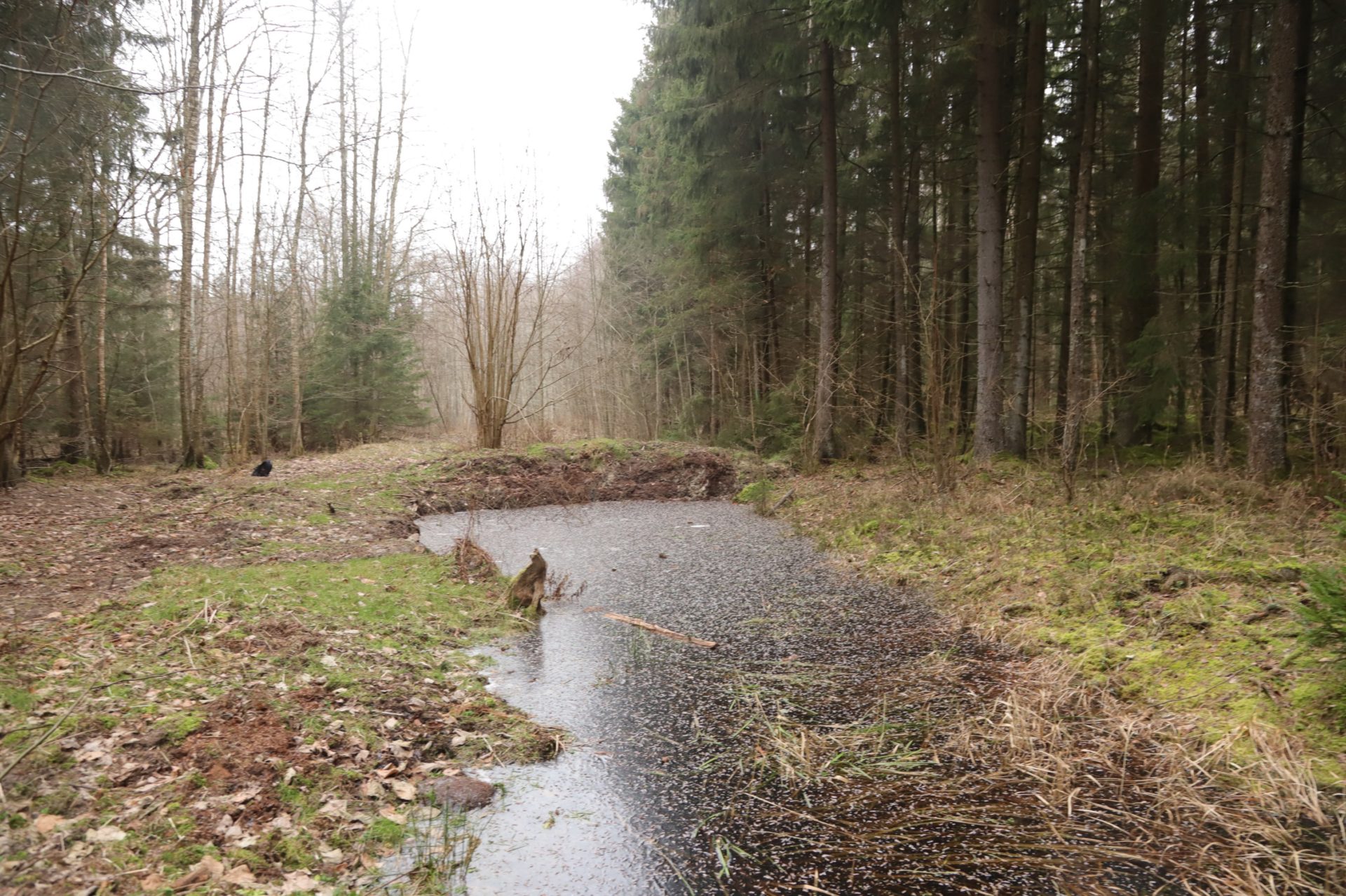Explore LIFE Peat Restore’s key outputs here
The LIFE Peat Restore (LPR) team, composed of 9 partners across 5 countries (Germany, Poland, Lithuania, Latvia, and Estonia), have successfully concluded their goals. The most relevant aim of all has been achieved, and that is none other, than the restoration of over 5,300 hectares of degraded peatlands. The climate mitigation impact of the project is impressive. It is estimated the restoration will lead to a reduction of 30% of the Global Warming Potential (GWP).
For a concise overview of the project measures and achievements check out our Layman’s report.

Key project outputs
To estimate the greenhouse gas (GHG) emissions from each project site, the Peat Restore team applied two techniques: the direct chamber measurements, and the GEST approach, which uses data collected on vegetation types and water levels as proxies. The ‘Handbook for Assessment of Greenhouse Gas Emissions from Peatlands’ provides a detailed description of the GHG monitoring techniques applied, and assessment of the results. Additional descriptions and results can be viewed also in the following reports:
- Updated GEST Catalogue – provides a detailed table of emission factors for different sites including a list with dominant plant species and a reference list for GHG studies until 2017. The catalogue was based on the official published list of COUWENBERG et al. (2011) and was adapted to our project goals, supplemented with citations, which are not included in the official catalogue. For a transparent presentation we also include the last updated values of the official list, that is used and adjusted by Reichelt et al. (2015).
- GEST Analysis Monitoring Report – provides a detailed overview of the identified Greenhouse Gas Emission Site Types (GEST) in all 5 partner countries, including the covered area, and a description of the botanical determinable plant species.
- 1st GHG GEST Balance Scenario – provides a calculation of the GHG emissions of every project site before project intervention and a description and projection of future GHG emissions with and without restoration measures. Based on the comparison of these scenarios we demonstrate the reduction potentials in the different project sites.
- Monitoring Protocols – provide detailed descriptions of the monitoring activities and results annually.
To gain a greater understanding of the regulatory framework in place in each of the project country, the Peat Restore team developed analyses of the current national legislations, the existing problems and gaps hindering peatland protection and restoration, as well as a series of recommendations to improve the situation: ‘Legal regulatory framework of peatland’ in Germany, Poland, Lithuania, Latvia, and Estonia.
The project restored 11 sites, covering a wide range of peatland types and state of degradation. Therefore, various techniques and materials were used and tested. In Estonia, for example, where the largest site was restored (approximately 3,300 ha), all dams were built with peat, whereas in other project sites, dams were built in combination with peat, clay, or composite materials. In Poland and Lithuania, heavily exploited sites were restored, by testing innovative techniques, which were required due to the extreme levels of degradation. Klub Przyrodników installed floating islands on a peatland area covered by shallow water and Lithuanian Fund for Nature spread Sphagnum on a bare peat area following peat extraction. A thorough assessment of the restoration techniques implemented in the project, as well as the results obtained, can be found here: ‘Best Practice Book for Peatland Restoration and Climate Change Mitigation’.
The project partners were also actively involved in efforts to raise awareness of peatlands’ essential role in climate change mitigation. The Peat Restore team produced and disseminated, nationally and globally, a variety of brochures about the project sites, peatlands’ ecosystem functions, as well as peatland policy and recommendations. In fact, to celebrate the start of the UN decade, five EU funded projects across Northwest Europe, the North Sea region, and the Baltic Sea published the Booklet ‘Peatland across Europe: Innovation & Inspiration’, highlighting key learnings and messages to equip future peatland practitioners and decisions makers with state-of-the-art information.
With the Final Conference, the LIFE Peat Restore team created a virtual platform to share and exchange experiences, results and lessons learned. It is definitely worth exploring. In addition to showcasing all presentations and project deliverables, the platform hosts two panel discussions with field and policy experts, on peatland restoration strategies, as well as barriers and enablers to scaling up restoration.
In 2021, the LIFE Peat Restore team hosted online an exciting roundtable discussion with the peat industry to discuss a future without peat use: ‘Peatlands for climate – moving beyond peat extraction’. Peatland experts discussed with industry representatives, national government and EU officials, the challenges, conflicts, and possible solutions to the phase out of peat use.
Finally, to close the LIFE Peat Restore project in the best way possible, the project partner, Rucka Art Foundation, produced two short films:
- ‘The true power of peatlands’ which takes the audience along a guided tour of the Latvian peatland landscapes while explaining the vital ecosystem functions they perform. Subtitles in all project languages available.
- ‘Make peatlands wet again’ which explains the restoration measures implemented by the project partners, in addition to showcasing the biodiversity and astonishing peatland landscapes in the Baltic region. Subtitles in all project languages available.
All project outputs are available in the ‘Publications’ webpage: LIFE Peat Restore – Publications (life-peat-restore.eu)



